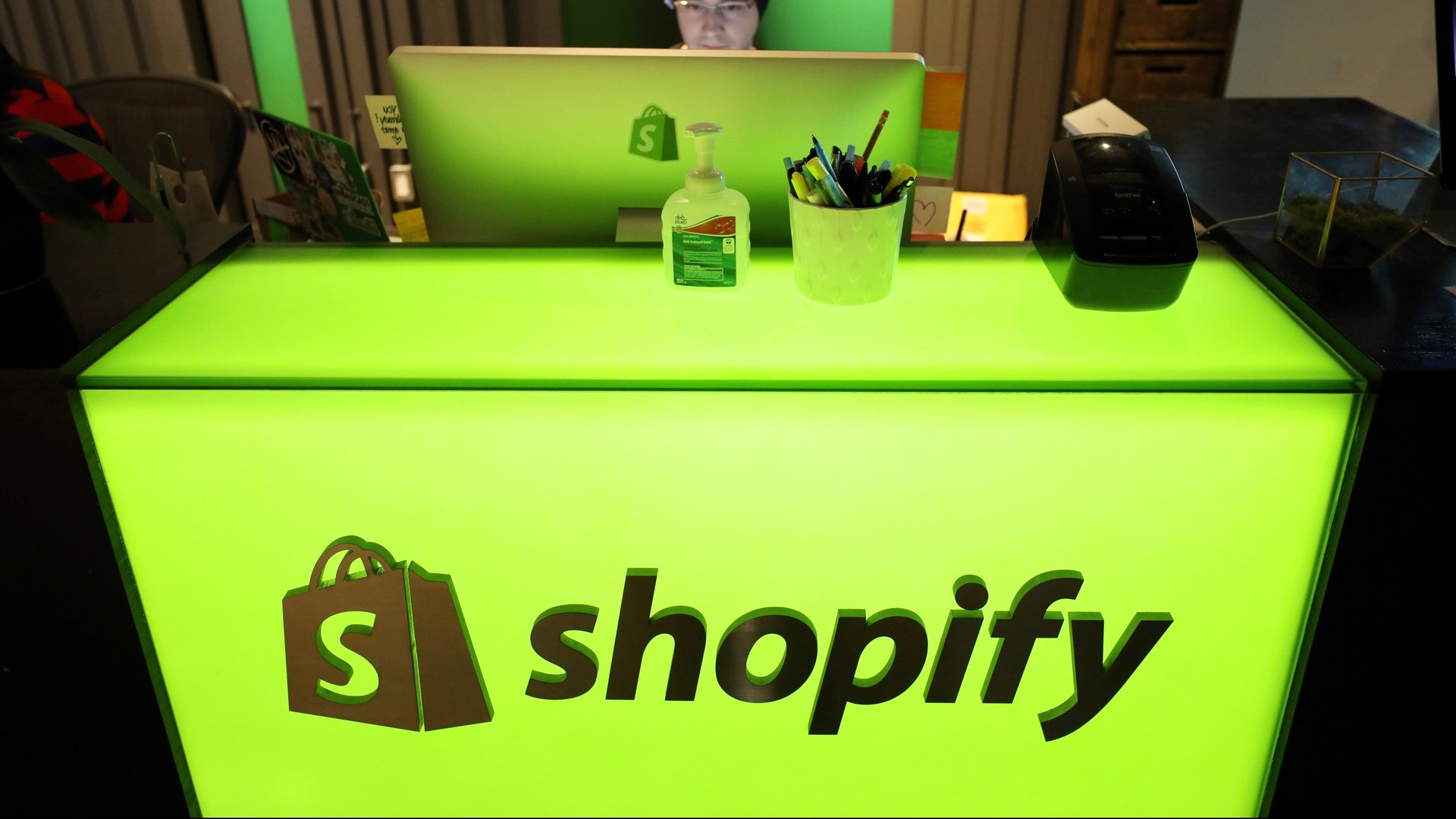Shopify is “arming the rebels” against Amazon
Chances are you haven’t noticed all the times you used Shopify to buy stuff online. That’s quite a feat for a company now estimated to be the second-largest e-commerce platform in the US, edging out eBay and trailing only Amazon. To consumers, Shopify is “virtually invisible,” co-founder and CEO Tobi Lütke wrote in a letter to shareholders in 2015, the year Shopify went public. “This,” he said, “is by design.”


Chances are you haven’t noticed all the times you used Shopify to buy stuff online. That’s quite a feat for a company now estimated to be the second-largest e-commerce platform in the US, edging out eBay and trailing only Amazon. To consumers, Shopify is “virtually invisible,” co-founder and CEO Tobi Lütke wrote in a letter to shareholders in 2015, the year Shopify went public. “This,” he said, “is by design.”
That’s because unlike Amazon, Shopify isn’t a shopping destination in itself, though it has recently taken a small step in that direction. It’s a platform for merchants to create their own digital shops with minimal fuss and limited technical know-how. Shopify provides the infrastructure, and subscribers need do little more than upload pictures and link a bank account to begin selling their wares online, with plenty of flexibility to customize their digital storefronts. For example, it powers sites selling Donald Trump gear—or did until it shut them down following the insurrection in Washington.
The company’s momentum has only accelerated during the pandemic, as online shopping surges and the company strikes new partnerships with companies like TikTok and Walmart. It’s a good time to be in the business of e-commerce.
Lütke and some friends launched the company in 2006 after trying to create a business selling snowboards online, only to find the available software complicated, expensive, and geared toward large companies. They pivoted to creating and selling a solution for small entrepreneurs.
There are now more than 1 million merchants in 175 countries using Shopify, including big brands such as Heinz, Allbirds, and Rebecca Minkoff. (While its basic subscription plan is $29 a month, a premium service, Shopify Plus, starts at $2,000 a month.) Most merchants, however, are on the smaller side. Just over half are located in the US, where Shopify is often held up as a potential check on Amazon’s ever-growing power. Rather than default to selling on Amazon, the thinking goes, entrepreneurs can just create their own online stores.
Shopify doesn’t bill itself as a direct competitor to Amazon, but it happily promotes itself as a counterbalance at least. In his 2018 letter to shareholders, Lütke warned of the risk of mega-companies consolidating power, and in a question-and-answer session on Twitter in 2019 he remarked, “Amazon is trying to build an empire, and Shopify is trying to arm the rebels.” The company has also introduced paid features such as loans for small businesses and a fulfillment service that uses a network of third-party logistics providers to handle warehousing and shipping, giving upstarts more firepower to compete against bigger players online.
How much product does Shopify sell?
By the digits
1,069,000: Number of merchants on Shopify’s platform at the end of 2019 (pdf)
$5.1 billion: Global sales across Shopify’s platform during the Black Friday/Cyber Monday weekend in 2020
$1 billion: Amount Shopify said in 2019 it would spend over the next five years building out a fulfillment network
$17: List price of Shopify stock for its debut on May 21, 2015
$1,069: Closing price of Shopify stock on Dec. 31, 2020
67%: Share of more than 500 investors surveyed by Benzinga at the start of 2021 who believe Shopify’s stock price will reach $2,000 by 2022
7.4%: E-commerce’s share of US retail sales in the third quarter of 2015
14.3%: E-commerce’s share of US retail sales in the third quarter of 2020
Shopify’s Covid surge
The pandemic supercharged growth of Shopify’s revenue, which comes from subscriptions, payment processing fees, and fees for add-on services such as fulfillment. The e-commerce boom Covid-19 triggered sent droves of merchants to set up digital stores on Shopify.
Shopify’s many partners
Shopify has a history of striking partnerships with companies to allow its merchants to easily list products for sale on their platforms. The deals keep coming, extending Shopify’s reach online. Companies it has made deals with since 2017 include:
But can it crack teleportation?
Shopify’s aim is to eliminate the e-commerce challenges entrepreneurs face, from setting up a store to shipping products to customers. On the company’s Oct. 29, 2020, earnings call, one analyst asked Lütke which remaining points of friction Shopify plans to tackle. Lütke replied:
It’s been just a question of time and capital allocation, so it’s certainly in scope for us to make the whole thing as simple as possible. I mean, the ideal way for us to do [that] with Shopify Fulfillment Network is employ teleportation. Like if we can figure out the physics related to that and can just make things appear on the desk right when you want them, then that would be awesome.
Keep reading
- Shopify faces a balancing act if it wants to counter Amazon without becoming Amazon.
- Will e-commerce ever come back down to pre-pandemic levels?
- The “Amazon of Africa” isn’t focused on selling stuff.
- Why on earth did Walmart want a slice of TikTok?
- To see the future of retail, look to Asia.